:dropcap_open:A:dropcap_close:re you guilty of recommending exercise to help your overweight patients lose unwanted fat? The answer could have a major impact on your clinical outcomes. Do you really believe that juggling balls for a few minutes daily—as seen on NBC recently—will burn enough calories to get the job done?

Do you not find the advice to buy a pedometer to track how many steps you can add to your walk every day an endless, boring journey? The fact is focusing on calories burned to lose weight is a bunch of pseudo-science BS that is guaranteed to short circuit any chance of your patients reaching their goals. Scientific literature shows little evidence of exercise being very effective in promoting weight loss.
I can confirm this fact, having over the years watched tens of thousands of exercisers struggling to lose weight with the typical exercise recommendations made by the healthcare system. The fact is many people don’t like exercise anyway, and certainly not our overweight patients.
What if you could design an exercise program for your patients that would help them lose weight, that didn’t require jogging, sit ups, aerobics or stretching, one that would increase your patients’ strength, balance, coordination, and flexibility, would increase their “heart reserve,” protecting them from a heart attack, a program that required little will power, commitment, or perseverance to stick with, could be accomplished with two short workouts weekly, and would have your patients singing your praises to all they know.
It is possible!
But before recommending this hypothetical exercise program, your patients need to understand why the archaic exercise and eating plans of the past few decades are not working. They need to know why they are getting fat in the first place and why their bodies are holding on for dear life to this fat, even “trapping” it in fat cells.
Impress on your patients that the reason for this is that their bodies are being overwhelmed by sugars, hidden sugars and carbohydrates at every meal and with every snack. Explain to them that the body will use some of this sugar immediately for energy, but the excessive sugar presents a problem and must be dealt with right away, as it is toxic to the cells, arteries and tissues. Explain that the response by the body to sugar in our blood is to excrete “insulin” from the pancreas.
The overall action of insulin is to take this excess sugar and store it in the muscle and liver. But there is only so much room there and the excess gets stored in the fat cells.
But here is the real damaging part to their weight loss goals: Insulin also serves to keep the fat stored in the fat cell, “locked up” so to speak until the blood sugars are low again. If most of what we are eating is being locked away in the fat cells due to the high sugar diets we are consuming, this leaves us with very little energy available for our muscles and organs.
The result is we are going to be constantly hungry. If we continue eating the same foods that promoted the high sugar problem in the first place, well, this fat storage process will continue on indefinitely. Our body does have another option when faced with a dwindling energy supply: It can slow down all functions, conserving energy at the cellular level and making us lazy.
Or our body can respond by becoming both hungry and lazy…sound familiar?
Now, if our goal is to lose fat, not just weight, and we don’t want to lose muscle, we must find a way to get at the fat that is locked away in the fat cells and use it for energy.
Here is where it gets interesting: The weight loss industry’s focus on reducing calories to lose weight may not hold water.
Why?
When our muscles and organs are not receiving enough energy from the foods we are eating, due to this energy being locked up in the fat cells, our body will compensate by conserving energy, and our metabolism, which is every cell in our body, will slow down. This conservation of energy may offset any reduction in calories (dieting) resulting in no weight loss.
We also know that the body can and will use sources other than fat for energy.
The lean tissues of the body, such as the muscles and organs, will be recruited as raw material for energy production, therefore resulting in no reduction in fat!
The final nail in the coffin for the obese patient is the addition of exercise into the mix.
If there is little fat available because it is locked up in the fat cells, and we begin eating less food, thinking this will help us lose weight but only results in the body just slowing down, and now we add exercise, where do we get the energy for the exercise? Again, muscle and organs such as the heart will now be used as a source of energy. The patient may now begin losing weight, but it will be lean tissue weight as a result of starving it. This also leaves these tissues susceptible to deficiencies.
Although this may sound simplistic, the answer to most of our weight loss problems (outside of the bio-chemical glitches of the body such as thyroid) is simply a matter of being able to access our fat reserves by eliminating the foods that are stimulating excessive insulin. Why? Because, again, insulin serves to keep fat locked up in the cells.
So why exercise?
If the greater influence to losing weight is the diet, one could say that the overemphasis on exercise may be having a negative effect on weight loss, as exercising while the fat stores are locked up may only serve to make us hungry, lazy and fatter.
If we can create an environment in which the fat stores are now available for use for energy, it would seem that adding exercise into the weight loss protocol would be a good way to reduce fat stores and therefore weight. Although “effective exercise” can aid in weight loss and benefit quality of life, all exercise beyond the ability of the body to adapt is counterproductive!
So what is “Effective Exercise”?
:dropcap_open:In other words, workouts should be designed to be invigorating, not overwhelming, long and fatiguing.:quoteleft_close:
A practical, effective exercise approach to health and fitness is to SIMPLY focus on muscle retention, and even adding a few pounds of muscle, as it is the most critical element of human fitness.
Skeletal muscle plays key biological roles in keeping you strong, functional and healthy. Muscle is obviously needed for physical movements, participates in the regulation of blood sugars, uses fat for energy and keeps us from becoming insulin sensitive or diabetic.
For the population that does not particularly like exercise and has limited time, resistance exercise can be safely performed and results in more parameters of fitness being influenced than any other exercise protocol.
This results in improvements in strength, endurance, flexibility, conditioning, muscle tone, stress relief, limited repetitive activity on joints, minimized oxidation, tapping into the fat stores effectively through “protein synthesis” and improved cardiovascular parameters.
What is interesting is that science and my practical experience with thousands of clients has demonstrated that these benefits can be had with as few as two workouts a week.
By being realistic with our patients about exercise limitations in supporting weight loss, we can now recommend a program that will give them all the benefits of exercise with only two effective workouts a week.
This implication could dramatically improve compliance for a population that does not necessarily like exercise or would shy away from the types of exercises that are not appropriate or prudent for them, such as jogging, aerobics, boot camp type classes, etc.
By not overemphasizing the volume of exercise as most programs do, which only sets our patients up for failure from the get-go, we can finally put the emphasis on the real problem and address the foods that are contributing to fat deposition.
With the emphasis on the foods that will keep insulin levels low and an exercise program that challenges the largest muscles of the body twice a week, large amounts of fat will be recruited to provide the energy to recover from this type of workout, even on the days you are not exercising. The typical game plan of walking or riding an exercise bike for 30-60 minutes daily, along with a few “toning” exercises, will probably not do the job. If you do get some results they will be the result of a tremendous cost in time and energy which eventually leads to giving it up and weight gain.
It is important to note that high-intensity, short-duration exercise has a stimulating effect on the metabolism, whereas the body perceives long-duration workouts as an unrelenting stressor, a cue to shut down metabolic activity and hormonal output to conserve energy (the same shut down caused by fasting or even low calorie diets).
In other words, workouts should be designed to be invigorating, not overwhelming, long and fatiguing.
By using reverse psychology and prescribing only two exercise sessions a week for your patient, by eliminating their hunger by not dieting, and by recommending effective exercises that are prudent and appropriate for their fitness level, the chances for long-term compliance is greatly improved, which inevitably will lead to better clinical outcomes.
The Cochrane Collaboration review: Pirazzo et al. 2002. The USDA analysis:
Kennedy et al. 2001:419 (table 11) Only one study tracked participants for more than a year: Jeffery et al. 1995 The WHI report on weight: Howard, Manson, et al. 2006
Haskell, W.L., I. M. Lee, R.R. Pate, et al. 2007 “Physical Activity and Public Health: Updated Recommendations for Adults from the American College of Sports Medicine and the American Heart Association.” Circulation. Aug 28: 116(9):1081-93
Wilder, R.M. 1993. “The Treatment of Obesity”. International Clinics. 4:1-21
Nussey, S.S., and S.A Whitehead. 2001. Endocrinology: An Integrated Approach. London: Taylor & Francis.
Berson, S.A., and R.S. Yalow. 1970. “Insulin ‘Antagonist’ and Insulin Resistance.” In Diabetes Mellitus: Theory and Practice. ed. M. Ellenberg and H. Rifkin, pp. 388-423. New York: McGraw-Hill
Yakovlev, 144, Breitbart et al., 163, Booth et al., 159
Brooks, 1997; Westcott, 1996
Ronald Grisanti D.C., D.A.B.C.O., M.S., is medical director of Functional Medicine University. If interested in improving your diagnostic skills and increasing your community reputation and recognition, we strongly recommend subscribing to our Free Clinical Rounds Series. These challenging case studies will give you the unique opportunity to test your clinical skills and, at the same time, improve your ability to handle many of the most difficult cases. Go to the following link to get your free access: www.Clinical-Rounds.com.
Rick Bramos, U.S. Army Coach (’73), Personal Trainer and Fitness Instructor certifications from the American Council on Exercise (A.C.E.). One of the first men Certified to teach Step, Body Pump and Spinning (’92). FREE BOOK CHAPTERS www.2daystofitness.com
 Humans have historically lived on health-promoting foods, including wild game (land animals, fish, and birds) and vegetation in the form of vegetables, fruits, nuts, tubers, and spices. Athletes and non-athletes should be consistent with our historical eating patterns. Grocery stores have a wide variety of natural animal proteins and vegetation, such that we can literally go to our favorite store and behave as modern hunter-gatherers. Athletes, versus non-athletes, will typically need additional calories, which means that athletes need to eat larger amounts of healthy foods 1-3.
Humans have historically lived on health-promoting foods, including wild game (land animals, fish, and birds) and vegetation in the form of vegetables, fruits, nuts, tubers, and spices. Athletes and non-athletes should be consistent with our historical eating patterns. Grocery stores have a wide variety of natural animal proteins and vegetation, such that we can literally go to our favorite store and behave as modern hunter-gatherers. Athletes, versus non-athletes, will typically need additional calories, which means that athletes need to eat larger amounts of healthy foods 1-3.
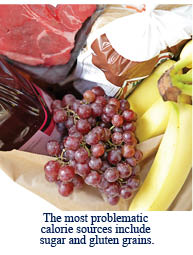

 There are two types of cholesterol: LDL and HDL. LDL cholesterol is the “bad” cholesterol because it carries cholesterol from the liver to the bloodstream, which can ultimately contribute to the formation of plaque that clogs the arteries, resulting in atherosclerosis. HDL cholesterol is the “good” cholesterol and has the exact opposite effect of LDL. Specifically, HDLs carry cholesterol away from the arteries and back to the liver, where it is then eliminated from the body.
There are two types of cholesterol: LDL and HDL. LDL cholesterol is the “bad” cholesterol because it carries cholesterol from the liver to the bloodstream, which can ultimately contribute to the formation of plaque that clogs the arteries, resulting in atherosclerosis. HDL cholesterol is the “good” cholesterol and has the exact opposite effect of LDL. Specifically, HDLs carry cholesterol away from the arteries and back to the liver, where it is then eliminated from the body.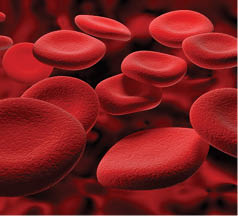
 Another process requiring direct Vitamin B12 participation is production of ATP from lipids and amino acids. Thus, cobalamin is often promoted as an energy-boosting nutrient. The central and the peripheral nervous systems are critically affected by the scarcity of Vitamin B12, which can manifest itself in depression, premature memory loss, confusion, and unpleasant sensations in the tips of the toes and fingers.
Another process requiring direct Vitamin B12 participation is production of ATP from lipids and amino acids. Thus, cobalamin is often promoted as an energy-boosting nutrient. The central and the peripheral nervous systems are critically affected by the scarcity of Vitamin B12, which can manifest itself in depression, premature memory loss, confusion, and unpleasant sensations in the tips of the toes and fingers.

 Nan was a size 4X and needed to lose a lot of weight. Nan explained that she had noticed a weight-loss advertisement for my clinic, so she came to my office to lose weight. The reason Nan wanted to lose weight was because she was scheduled to have one of her legs amputated due to her terrible neuropathy. Nan feared that since she was so overweight, she would not be able to walk on the new prosthetic leg she would receive after her amputation. Her goal was simple: She wanted to lose enough weight to be able to easily adjust to her new prosthetic leg.
Nan was a size 4X and needed to lose a lot of weight. Nan explained that she had noticed a weight-loss advertisement for my clinic, so she came to my office to lose weight. The reason Nan wanted to lose weight was because she was scheduled to have one of her legs amputated due to her terrible neuropathy. Nan feared that since she was so overweight, she would not be able to walk on the new prosthetic leg she would receive after her amputation. Her goal was simple: She wanted to lose enough weight to be able to easily adjust to her new prosthetic leg.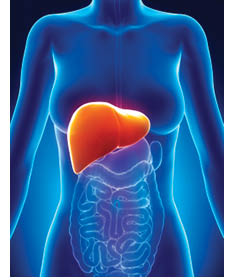
 It is critical to make sure your detox program:
It is critical to make sure your detox program: 
 “Seven out of 10 deaths are caused by chronic diseases, and more than 75 percent of health care costs are spent treating conditions that are preventable,” Thompson said during an event held at Standard Process Inc. last year. “There’s so much more we could be doing, especially in the area of nutrition, to prevent these diseases from ever occurring versus treating them after the fact. It’s encouraging to see that we’re finally ready to invest in keeping people well in the first place.”
“Seven out of 10 deaths are caused by chronic diseases, and more than 75 percent of health care costs are spent treating conditions that are preventable,” Thompson said during an event held at Standard Process Inc. last year. “There’s so much more we could be doing, especially in the area of nutrition, to prevent these diseases from ever occurring versus treating them after the fact. It’s encouraging to see that we’re finally ready to invest in keeping people well in the first place.”
 Columnist Review by Dr. Dan Murphy, D.C.
Columnist Review by Dr. Dan Murphy, D.C. 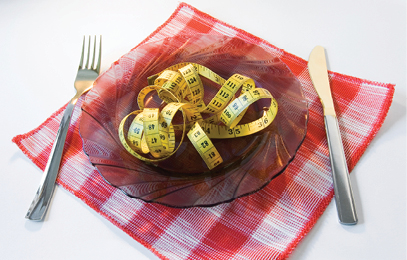
 In human and animal studies, caloric restriction has been associated with the reduction of pain and inflammation (4-6). The precise mechanisms are not known for sure; however, it is clear that overeating nutrient-free and calorie dense foods will lead to postprandial elevations in glucose and triglycerides, which is associated with inflammation and is referred to as postprandial dysmetabolism (7). Americans spend most of their waking hours in the postprandial dysmetabolic state (7). While postprandial dysmetabolism is largely studied in the context of heart disease and diabetes, it can be applied to all conditions associated with inflammation. In other words, it makes no sense for patients with pain to live their lives in the postprandial inflammatory state. Identifying these patients in advance is helpful; they are overweight and sedentary, which is the majority of patients. These patients overeat sugar, flour, and excessively fatty foods at the expense of vegetables and fruit.Perhaps a chronic postprandial dysmetabolic inflammatory state is why patients are less responsive to spinal adjustments today, compared to yesteryear. This has been suggested to me as a possible reason by numerous DCs in the past twenty years who had been in practice for at least 40 years. Modest caloric restriction immediately reduces postprandial inflammation (7), a practice that should be adopted by all patients in pain. Simply cut out the high calorie dessert foods and snacks and increase the consumption of whole foods, particularly vegetables and fruit.
In human and animal studies, caloric restriction has been associated with the reduction of pain and inflammation (4-6). The precise mechanisms are not known for sure; however, it is clear that overeating nutrient-free and calorie dense foods will lead to postprandial elevations in glucose and triglycerides, which is associated with inflammation and is referred to as postprandial dysmetabolism (7). Americans spend most of their waking hours in the postprandial dysmetabolic state (7). While postprandial dysmetabolism is largely studied in the context of heart disease and diabetes, it can be applied to all conditions associated with inflammation. In other words, it makes no sense for patients with pain to live their lives in the postprandial inflammatory state. Identifying these patients in advance is helpful; they are overweight and sedentary, which is the majority of patients. These patients overeat sugar, flour, and excessively fatty foods at the expense of vegetables and fruit.Perhaps a chronic postprandial dysmetabolic inflammatory state is why patients are less responsive to spinal adjustments today, compared to yesteryear. This has been suggested to me as a possible reason by numerous DCs in the past twenty years who had been in practice for at least 40 years. Modest caloric restriction immediately reduces postprandial inflammation (7), a practice that should be adopted by all patients in pain. Simply cut out the high calorie dessert foods and snacks and increase the consumption of whole foods, particularly vegetables and fruit.
 Ginseng has a remarkable history going back over 2,000 years in written medical documentation, and many estimates place its use as a natural healing herb going back over 5,000 years! Ginseng has been used to prevent and cure an extraordinary catalog of human ailments, from diabetes to mental/neural dysfunction, to sexual function and waning libido, fatigue, cardio vascular health, adrenal stress, and even cancer. Ginseng is considered by many herbalists as the world’s most complete adaptogen. Wait!!! Before you compare ginseng to your favorite adaptogen, one point needs to be clarified: not all ginseng is the same!
Ginseng has a remarkable history going back over 2,000 years in written medical documentation, and many estimates place its use as a natural healing herb going back over 5,000 years! Ginseng has been used to prevent and cure an extraordinary catalog of human ailments, from diabetes to mental/neural dysfunction, to sexual function and waning libido, fatigue, cardio vascular health, adrenal stress, and even cancer. Ginseng is considered by many herbalists as the world’s most complete adaptogen. Wait!!! Before you compare ginseng to your favorite adaptogen, one point needs to be clarified: not all ginseng is the same! When we study the history of Korean Panax Ginseng we find that it is a completely balancing herb and considered a sweet herb with both Yin and Yang characteristics, depending on how it is processed. “Sheng Nung Pen Ts’ao Ching” (book of herb)
When we study the history of Korean Panax Ginseng we find that it is a completely balancing herb and considered a sweet herb with both Yin and Yang characteristics, depending on how it is processed. “Sheng Nung Pen Ts’ao Ching” (book of herb)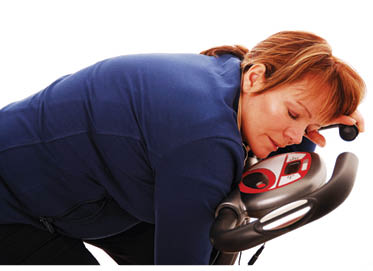
 Do you not find the advice to buy a pedometer to track how many steps you can add to your walk every day an endless, boring journey? The fact is focusing on calories burned to lose weight is a bunch of pseudo-science BS that is guaranteed to short circuit any chance of your patients reaching their goals. Scientific literature shows little evidence of exercise being very effective in promoting weight loss.
Do you not find the advice to buy a pedometer to track how many steps you can add to your walk every day an endless, boring journey? The fact is focusing on calories burned to lose weight is a bunch of pseudo-science BS that is guaranteed to short circuit any chance of your patients reaching their goals. Scientific literature shows little evidence of exercise being very effective in promoting weight loss.